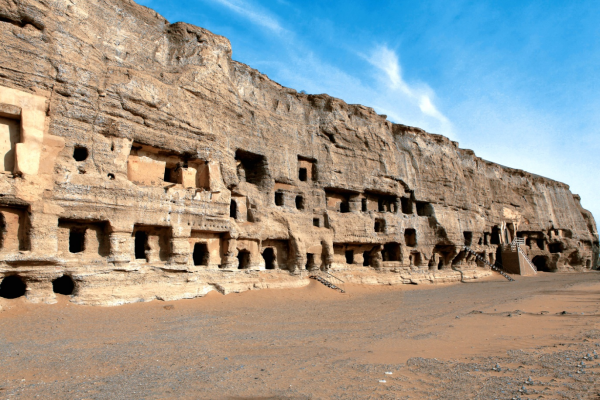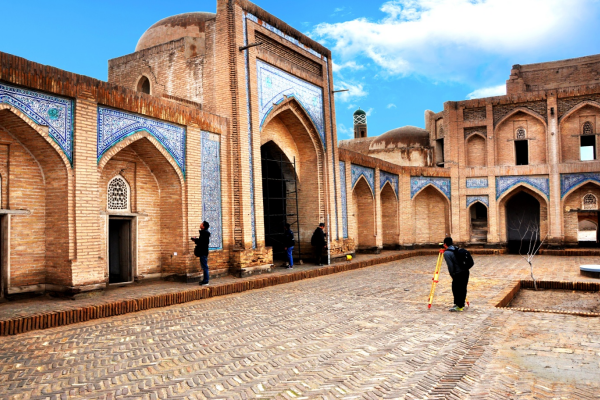The ancient Silk Road, spanning thousands of miles and lasting for thousands of years, cultivated the core spirit of the Silk Road, characterized by peace, cooperation, openness, inclusiveness, mutual learning, and mutual benefit. This historic trade route has also left behind countless precious cultural legacies.
The cultural heritage protection team at China Railway Academy Co., Ltd., a subsidiary of China Railway Group Limited (CREC), a Chinese central state-owned enterprise in the field of infrastructure, has been committed to cultural relic protection along the Silk Road. They have been engaged in the restoration of the Yulin Caves in Dunhuang, the northern area of the Mogao Caves in Gansu Province, the Bezeklik Thousand Buddha Caves at the foot of the Flaming Mountains, the Kizil Thousand Buddha Caves, and the ancient city of Khiva in Uzbekistan, etc.

Restoration project of the northern area of Mogao Caves [Photo/sasac.gov.cn]
The ancient city of Khiva is located in an oasis on the lower reaches of the Amu Darya River in the southwestern part of modern-day Uzbekistan, and it has been an important town along the Silk Road since the 4th century AD. The ancient city has formed rich and diverse historic culture, earning itself the reputation of being Uzbekistan's first UNESCO World Heritage site and being dubbed a "paradise of museums". This ancient city along the ancient Silk Road has not only witnessed the flourishing trade exchanges between the East and the West, but has also become a testimony to contemporary civilization exchanges and mutual promotion between China and Uzbekistan in the new era.
The restoration and preservation project of the historical and cultural relics of the ancient city of Khiva in the Khorezm, Uzbekistan, is China's first cultural heritage protection project undertaken in Central Asia. As an important cultural cooperation project between China and Uzbekistan under the framework of the Belt and Road Initiative Northwest Research Institute Co., Ltd of CREC has been deeply involved in the conservation and restoration of this ancient city.
Throughout the restoration process, Northwest Research Institute Co., Ltd of CREC established a professional team specializing in cultural heritage restoration, comprising experts in hydrogeology, engineering geology, engineering exploration, deformation monitoring, and mapping and surveying. They addressed the unique challenges faced in preserving this ancient cultural treasure through various methods.
The project team used local traditional materials and techniques wherever possible. Following the principles of minimal intervention and the preservation of the original state of the relics, they worked on repairing and reinforcing damaged structures, ensuring the structural integrity and safety of the buildings. These efforts have helped preserve the historical value of these heritage sites.
In addition, the project team has delved into local history and nurtured local artisans, pioneering a new model of localized collaborative repair of ethnic and religious buildings. In addition to addressing structural issues, they have revitalized this ancient city built in the 18th century.

Restoration project of the ancient city of Khiva in Uzbekistan [Photo/sasac.gov.cn]
The results of the restoration project of the ancient city of Khiva have been highly recognized by both China and Uzbekistan. In a joint statement issued in May 2017, leaders of both nations underscored the project's success and committed to further cooperation in such areas as archaeology, cultural heritage preservation, restoration, and professional training.
To date, China Railway’s cultural heritage protection team has completed nearly 600 cultural heritage preservation tasks, including at 43 UNESCO World Heritage sites. Adhering to openness, cooperation, and innovation, the team will continue to contribute to the preservation and inheritance of world cultural heritage in the broader field. They are dedicated to writing a new chapter of mutual learning among civilizations and people-to-people connections.
(Executive editor: Xie Yunxiao)